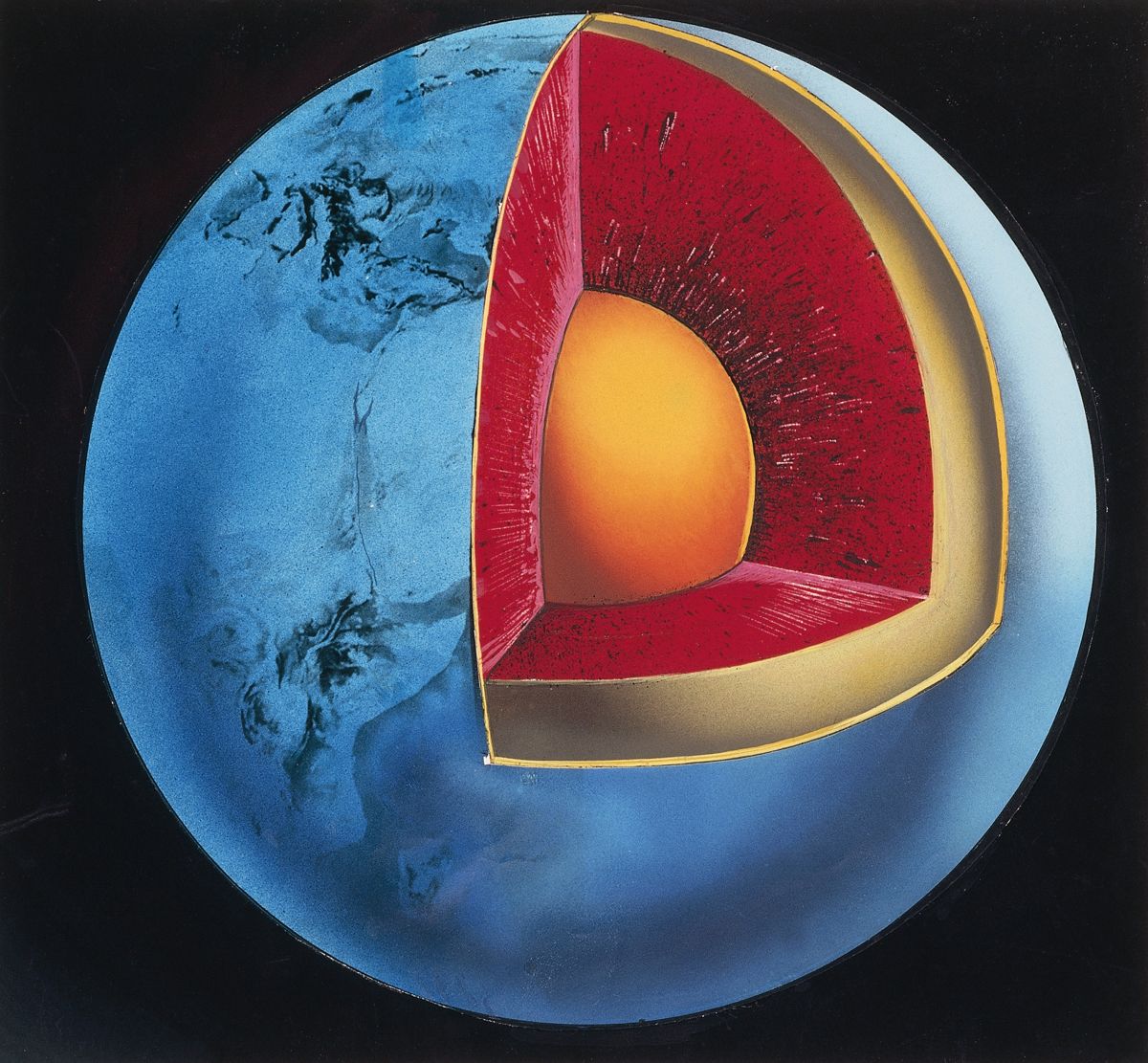
Hunks of oceanic crust are wedged inside Earth's mantle
In Geology 101, Earth's interior is divided into neat layers, like a sugar-coated jawbreaker. But it turns out that parts of the planet's middle layer might be more like peanuts in a sea of caramel. Seismic data reveal that there may be hunks of oceanic crust stuck deep within the planet's liquid mantle, creating big lumps in one of those smooth layers. The authors of a new study discovered those "peanut chunks" inside the gooey mantle beneath East Asia. Their findings, besides being deliciously intriguing, could have implications for models of how the oceanic crust forms and moves. Related: Earth's 8 biggest mysteriesHow did those chunks of oceanic crust get into that layer? The lithosphere is Earth's rigid outer layer, encompassing a cracked crust and hot upper mantle. The hot mantle churns and circulates, moving the crust at the surface, causing the oceanic crust to dive into its depths — a process called subduction — and triggering the upwelling of vast plumes of magma toward Earth's surface. "Earth is energetic, manifested by the tectonic movement of the lithosphere and underlying convection in the deep mantle," said Jikun Feng, lead author of the study and a postdoctoral researcher at the University of Science and Technology of China. But geologists know very little about how the deeper regions of the mantle behave, despite its likely impact on mantle circulation. The team wanted to create a more detailed picture of the structure and composition of the mantle and how it relates to mantle circulation, especially in the transition zone between the upper and lower mantle. Feng and colleagues focused on an area under China, where the North China crust sits atop a piece of oceanic Pacific crust that is buried deep within the mantle. This region of the Pacific tectonic plate is considered "stagnant" because it doesn't sink past the transition zone, and instead seems to float within the mantle. They wanted to better understand what happens at the transition zone within the mantle, and how stagnant slabs might affect circulation.Traditionally, seismologists studied the structure of the mantle using seismic waves (waves that travel through Earth) produced by large earthquakes, Feng said. However, these earthquakes don't happen everywhere, all the time. To get around this limitation, Feng's team used an existing array of more than 200 seismometers to record ambient seismic noise, or small, everyday vibrations not tied to specific temblors. Seismic waves can reveal "the footprint of deep mantle circulation," Feng told Live Science. That's because seismic waves travel differently through materials of various densities and properties. And these properties can change or be changed by other phenomena, such as the descent of oceanic slabs. Rising mantle plumes also disturb Earth's interior and result in different seismic measurements.In the new study, the researchers stacked the seismometer readings from those instruments to see how seismic waves behaved in the mantle at the transition zone, where the upper and lower mantle meet. (The lower mantle is hotter, deeper and under more pressure than the upper mantle.) They found a sharp discontinuity, or change in the speed of seismic waves, within the mantle at a depth of 410 miles (660 kilometers), or the bottom of the transition zone between the upper and lower mantle. Based on those waves, they concluded that some of the oceanic slab had "bunched up" at the base of this zone and prevented the Pacific plate from diving further. The team hypothesized that as the oceanic slab meets denser rock at that depth, it ceases its descent into the mantle and instead spreads laterally within the transitional mantle. The stuck slab then separates chemically into differing mineral compositions. This chemical separation creates a "chunky" region of the mantle with a complex structure, which differs slightly from the rest of the mantle material, which is pyrolite (a rock that is about three parts peridotite and one part basalt). "Our findings provide direct evidence of segregated oceanic crust trapped within the mantle transition zone," Feng said.The new work provides insight into mantle circulation, including how stagnant slabs might behave within the transition zone, Feng said. He noted that understanding the nature of mantle heterogeneities "can provide critical insights into the mantle circulation process and finally the evolution of our planet."Their findings were published May 5 in the journal Nature Communications. Originally published on Live Science.
……Read full article on Live Science
Comments
Leave a comment in Nestia App